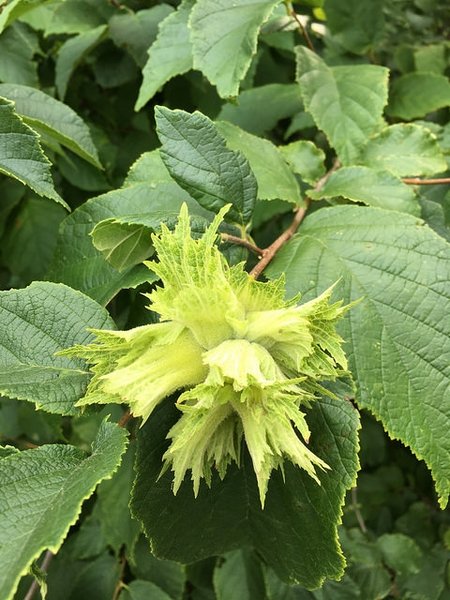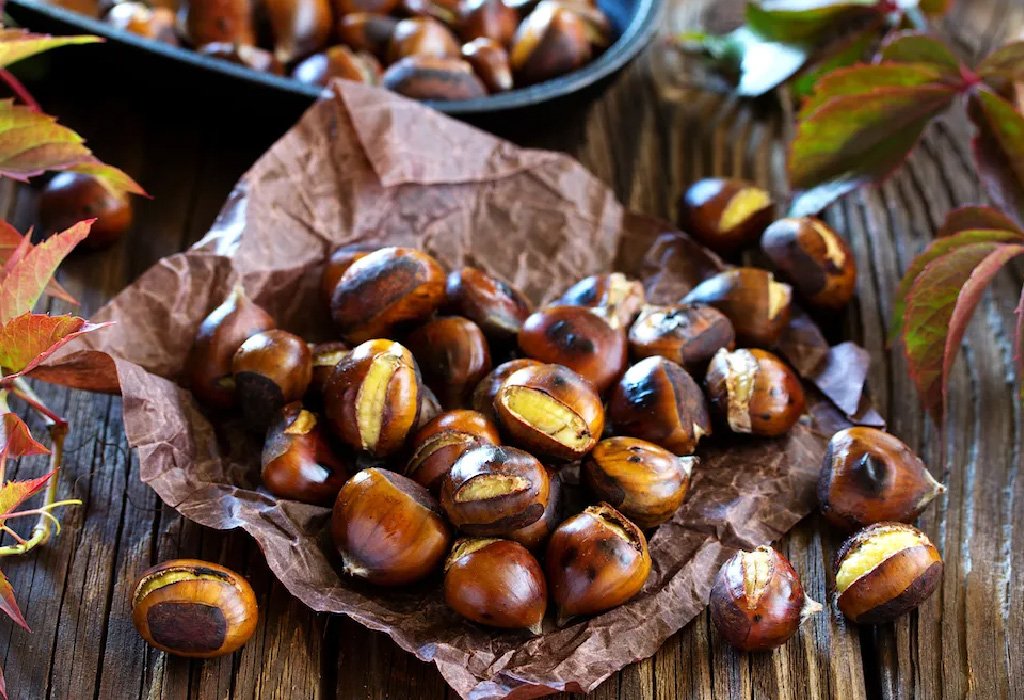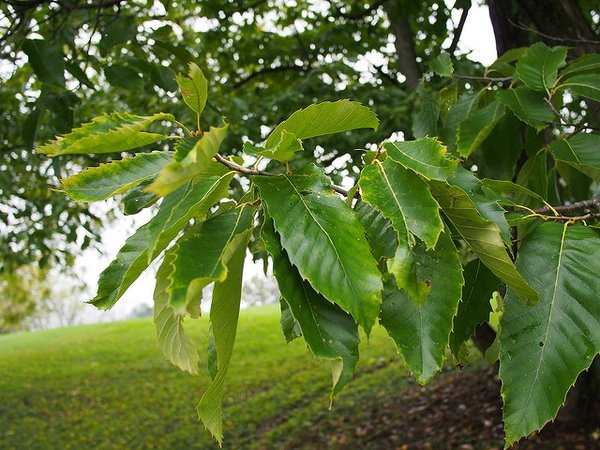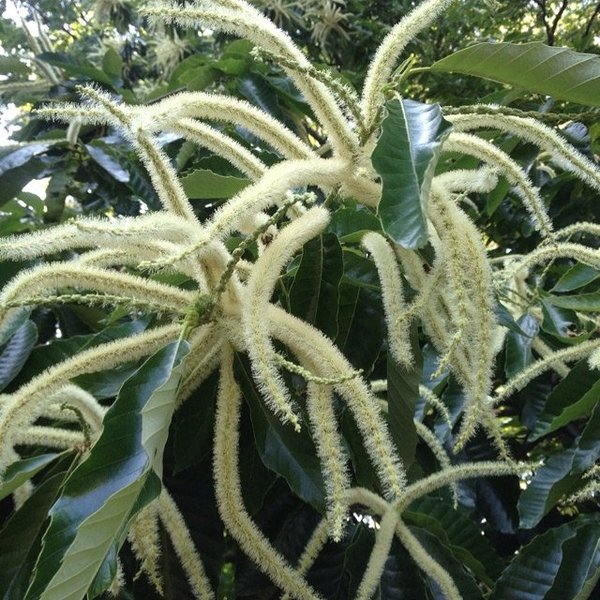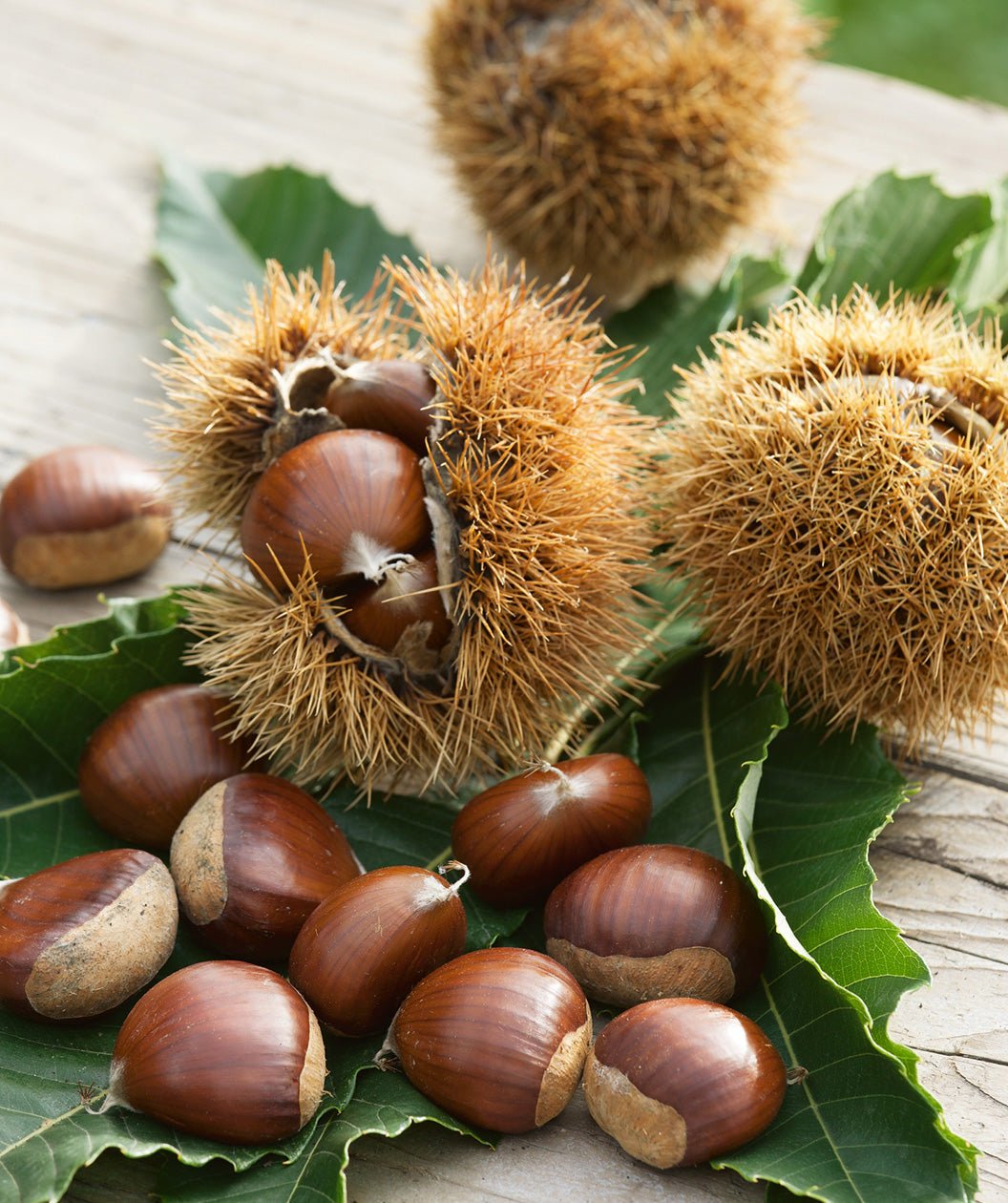Hazelnuts are small, round nuts with a delicious, buttery-sweet flavor and crunchy texture, and they’re perfect for snacking, baking, or making nut butter. These native North American trees grow 8-20 feet tall and wide, thriving in full sun to partial shade. Hazelnuts produce attractive, rounded leaves and early spring catkins, making them an excellent addition to any garden, whether as part of a hedge or a stand-alone tree.
The use of hazelnuts dates back thousands of years, with ancient cultures on multiple continents recognizing their nutritional value and versatility. Native Americans used the Hazelnut raw or roasted, often ground into flour, while the tree's wood and bark were used for tools, medicine, and even as a material for baskets and other crafts. Meanwhile, the ancient Greeks and Romans used hazelnuts (a cousin of the North American species) for both culinary and medicinal purposes, believing it to improve brain function and treat various ailments, from coughs to digestive issues. Today, hazelnuts are cherished for their high protein, fiber, and healthy fat content.
In the landscape, hazelnuts make a great choice for edible hedges or as a feature tree. They’re easy to grow and require minimal care once established. The nuts are delicious eaten raw, roasted, or ground into flour for baking. Hazelnuts are also perfect for making hazelnut butter, a popular alternative to peanut butter. Additionally, the oil extracted from hazelnuts is rich in healthy fats, making it a valuable addition to cooking.
Zone Range: 4-8
Sun Requirements: Full sun to partial shade
Size at Maturity: 8-20 feet tall, 8-20 feet spread
Pollination: Needs two plants to pollinate (must be different varieties for cross pollination)



